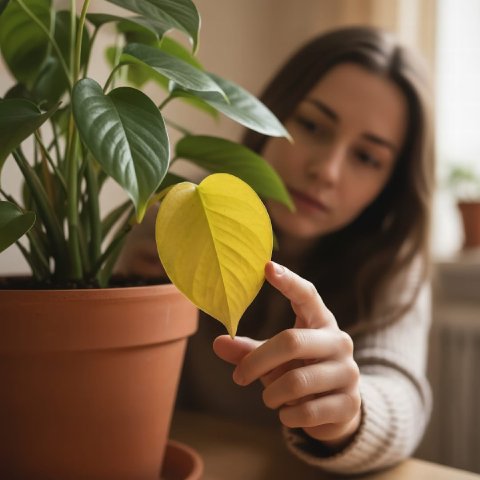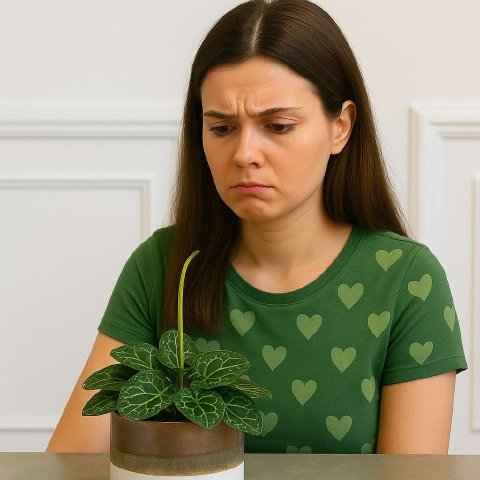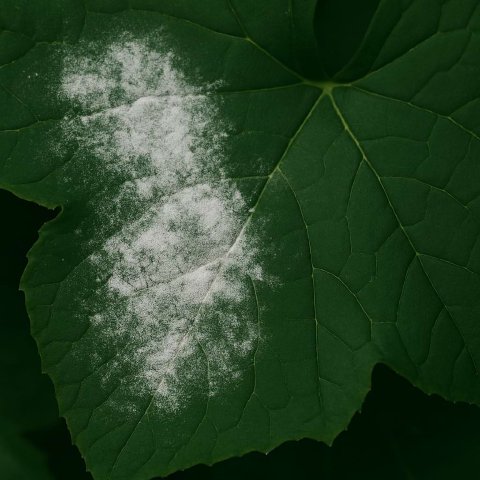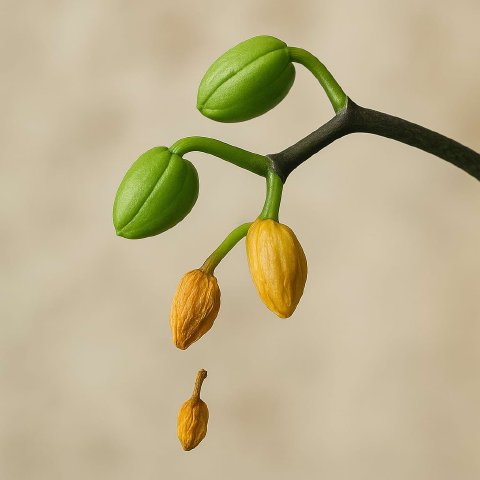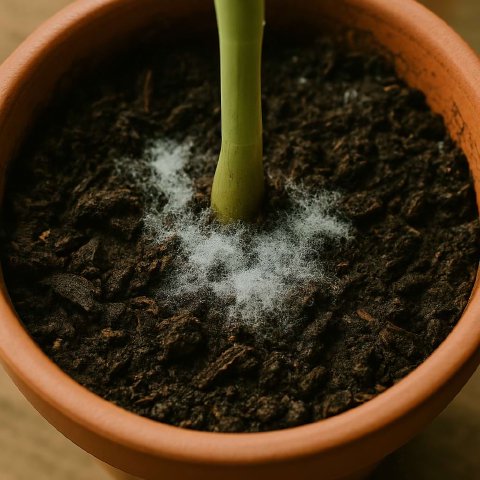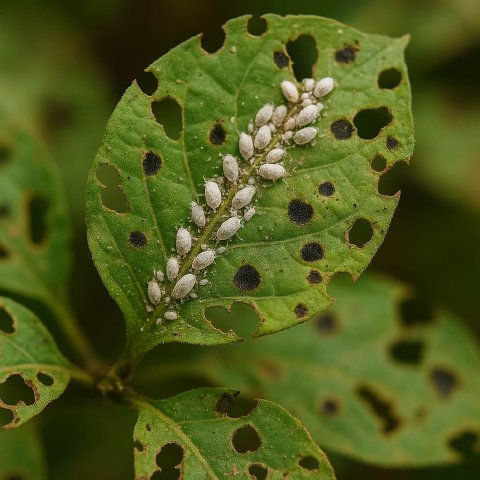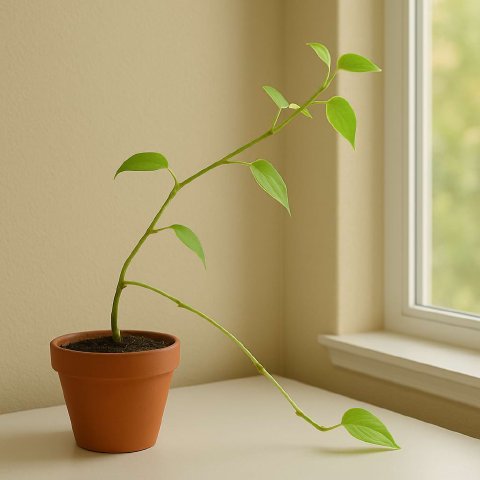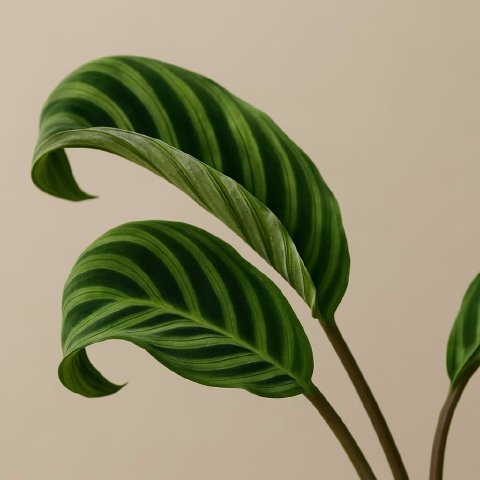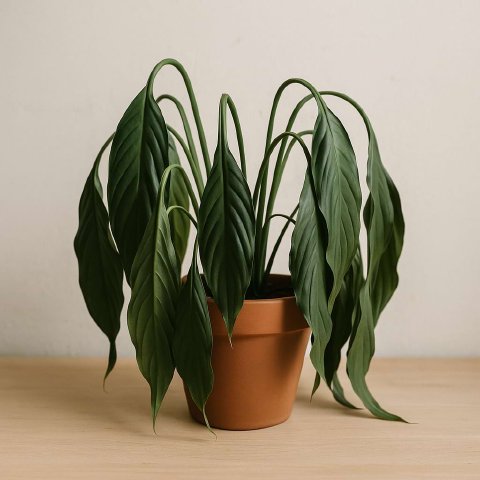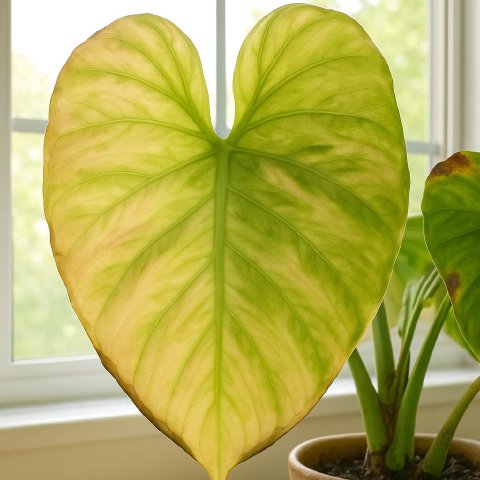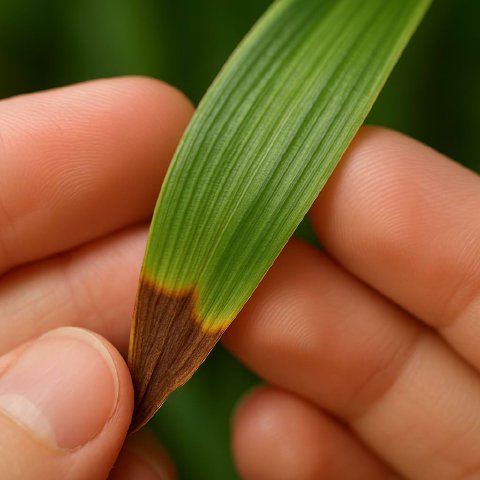🪴 In This Guide 🪴
🎯 Brown or Black Spots? Let's Diagnose the Problem
Quick Diagnostic Chart
Hello, plant enthusiasts! Anastasia here. Finding dark spots on your plant’s leaves can be alarming, but take a deep breath. Those spots are clues that your plant is sending you. By looking closely at the type of spot, we can figure out the cause and get your plant back to health.
Not all spots are created equal. Use this chart to get a head start on your diagnosis, and then we’ll explore the solutions in detail.
| If you see… | And the soil is… | It’s likely… |
|---|---|---|
| Circular brown spots with a distinct yellow halo | N/A | Fungal Leaf Spot Disease |
| Soft, mushy, dark brown or black spots, often near the base | Soggy / Wet | Root Rot / Overwatering |
| Dry, crispy, tan or brown patches in sunny areas | N/A | Sunburn |
| Tiny black specks, possibly with silvery leaf damage | N/A | Pests (especially Thrips) |
| An irregular brown spot where the leaf was bent or hit | N/A | Physical Damage |
🤔 Why Do Leaves Get Spots?
The Science of a Spot
A brown or black spot on a leaf is an area where the plant’s cells have died. This is a process called necrosis. It’s the plant equivalent of a wound or a lesion.
This can happen for many reasons. An external attacker like a fungus can kill the cells, or an internal problem like root rot can cut off the water and nutrient supply to that area. Our mission is to look at the evidence-the shape, color, and texture of the spot-to determine why those cells died, so we can stop it from happening to the rest of the leaf.
🌿 Top 5 Causes of Brown or Black Spots and How to Fix Them
Cause #1: Fungal Leaf Spot Disease
This is a very common cause, especially in humid conditions.
- Why it happens: Microscopic fungal spores are always in the air. When they land on a wet leaf in a spot with poor air circulation, they can germinate and infect the plant tissue, creating a dead spot.
- How to check: Fungal spots are often very distinct. Look for circular spots that may have a ring-like or target-like appearance. Crucially, they often have a bright yellow “halo” around the dark, dead center. They can appear anywhere on the leaf.
- The Fix:
- Isolate the plant to prevent spores from spreading.
- Prune affected leaves with clean scissors and dispose of them in a sealed bag (not the compost).
- Improve air circulation around the plant.
- Water the soil, not the leaves. Keep foliage as dry as possible.
- For persistent issues, treat with a copper-based or sulfur-based fungicide, following the label instructions.
Cause #2: Overwatering & Root Rot
Sometimes, the problem starts below the ground.
- Why it happens: Waterlogged soil suffocates the roots, causing them to rot. These dying roots can no longer supply water to the leaves, and they can also be attacked by bacteria that travel up the plant’s stem, causing tissue death that shows up as dark spots.
- How to check: The spots are often soft, dark brown or black, and mushy. They may appear at the edge of the leaf or in random patches. This will always be accompanied by soil that is consistently wet and a pot that may lack proper drainage.
- The Fix: This is an emergency. Immediately stop watering. Unpot the plant and inspect the roots. Trim away any black, slimy, or mushy roots with sterile scissors. Repot in fresh, well-draining soil and a pot with good drainage. Water very sparingly until the plant shows signs of recovery.
Cause #3: Pests
Tiny bugs can leave behind big clues.
- Why it happens: While most pests cause yellowing, some leave behind evidence that looks like black spots. Thrips, for example, leave tiny, black, varnish-like specks of frass (droppings) on top of their silvery feeding damage.
- How to check: Get up close and personal. Look for the pests themselves, sticky honeydew, or fine webbing. The “spots” from thrips will be superficial and can often be wiped away, unlike a spot of dead tissue.
- The Fix: Isolate the plant and treat the specific pest. A thorough rinse followed by a treatment with insecticidal soap or neem oil is usually the best course of action.
Cause #4: Sunburn (Leaf Scorch)
Just like our skin, leaves can get sunburned.
- Why it happens: Placing a plant that prefers indirect light in a spot with intense, direct sun will scorch the leaves, killing the cells.
- How to check: The spots will be on the parts of the plant most exposed to the sun. They often look like dry, crispy, tan or light brown patches rather than dark, defined spots. The leaf may also look bleached or faded yellow in the same area.
- The Fix: This is an easy one! Move the plant to a location with more appropriate, less intense light. The sunburned spots won’t heal, but you will prevent further damage.
Cause #5: Physical Damage
Sometimes, a spot is just a bruise.
- Why it happens: A leaf getting bumped, bent, creased, or scratched can damage the cells, causing them to die and turn brown in that specific spot.
- How to check: The spot will directly correspond to a physical injury. It won’t grow or spread, and no other spots will appear unless the plant is damaged again.
- The Fix: Nothing is needed! The plant has already healed itself. If the look of the damaged leaf bothers you, you can trim it off.
🛡️ How to Prevent Spots in the Future
Best Practices for Spot-Free Leaves
- Improve Air Circulation: Good airflow is the #1 enemy of fungal disease. Avoid crowding plants too tightly. A small, oscillating fan can work wonders.
- Water the Soil, Not the Plant: Keep leaves as dry as possible. Water at the base of the plant in the morning so any accidental splashes can dry quickly.
- Water Properly: Avoid overwatering by always checking the soil moisture first. Ensure every pot has drainage.
- Provide the Correct Light: Know your plant’s light needs and place it where it will be happy, not scorched.
- Inspect Regularly: Catching pests or the first sign of a fungal spot early makes treatment much easier.

